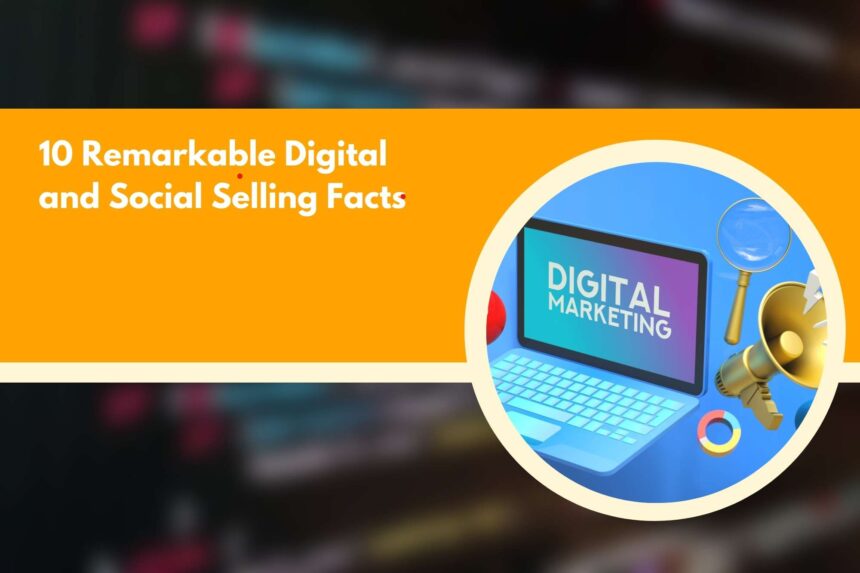The habits of consumers change along with how we interact with the world. By giving people quick access to information, the internet shifted the rules of the game.
In order to guide our buying decisions twenty years ago, we used analog techniques like phone calls and word-of-mouth research. We depend largely on digital spaces nowadays since they can offer full specifications, costs, and user feedback.
Consumer purchasing habits are changing, and selling practices are doing the same. Social selling is the most cutting-edge method of interacting with customers. It’s a method by which advertisers may use social networks to forge new relationships, track down more leads, and develop customers. Social selling draws visitors to your online store.
Sales Opportunities Increase for Social Sellers
- The foundation of social selling is establishing a rapport with customers before they choose to buy your good or service. It’s about establishing yourself as a dependable resource for knowledge, not just about what you’re selling but also about industry news, trends, and general consumer education. By adopting a thought-leadership position, you may make your presence known inside these circles. Create attractive material to find and entice new clients.
- Leading the social selling game results in higher sales and better overall results. Compared to colleagues that don’t engage in the same amount of activity, social selling leaders can bring in 45% more new possibilities. They have a 51% higher chance of meeting quotas as well. According to research, social salespeople outsell peers who don’t use social media 78% of the time.
Continuous Social Selling Advances Sales Objectives
- Social sellers have a 40% higher chance of exceeding their income targets than non-social sellers if they are committed and consistent in their operations. Throughout the sales cycle, you may maintain contact with potential customers by producing a consistent stream of pertinent and useful content for your audience, especially on the social media channels they use the most. As a result, both the decision to buy and the sales process may become considerably simpler.
- People who may be outside the company and looking for goods and services may also be influenced by it. Consumers are mindful of consistency and connection. A regular flow of social media activity might expand your prospect pool and help you reach new audiences.
Building Deeper Relationships Through Social Selling
- The buyer-seller gap is slashed in half via social media. Although it can also give businesses detailed and customized information about consumers, it improves access to information for consumers about the businesses they study. Social media was built from the ground up to help people get to know one another better.
- Without ever speaking to someone, it may be easy to learn about their interests based on their privacy and sharing preferences. Social sellers can discover information about a prospect’s interests, preferred media, place of education, and social media networks.
- This knowledge can help you learn more about someone you wish to get along with and might give you a foundation on which to establish a relationship.
Social Selling is performed by Almost All Top Brands
- The top 100 brands were examined, and it was discovered that almost all of them are active on social media. In addition to being active on Facebook, Twitter, and Instagram, 100% of them had at least one YouTube channel. The value of having a company’s face on social media is demonstrated by this.
- And only 31 of the 42 CMOs or other senior marketing executives for those firms had active Twitter accounts. There were only six brands with CMOs who had 10,000 or more followers at the time of the investigation. In essence, there is a lot of fertile ground accessible for you to sow the seeds of social selling.
The desire of consumers to interact with thought leaders on social media
- Buyers are more comfortable transacting with businesses that present as informed and reliable.
- Developing your company’s image and creating a leadership position can be greatly aided by demonstrating your self-assurance as an expert in your field and sharing your knowledge with your followers and prospects.
- This is the fundamental idea behind social selling. Buyers are at least keeping track of thought leaders’ activity, even if they aren’t spending time with them. By using social selling, you may position yourself as an expert in your industry who can offer advice and knowledge to assist others to develop their businesses. You may attract more customers and revenue by putting yourself out there.
Social Media is Often Preferable to Phone Contact for Consumers
- Checking social media has become common practice for many people. For updates on our family and friends, we check Facebook. For the most recent news, we check Twitter. For entertainment and educational films, we check YouTube.
- Most people use one of these platforms every day, including those who aren’t heavy users. The average amount of time spent on social media is actually second only to television viewing among everyday activities. In terms of marketing, social selling is created to draw clients at every stage of the customer journey, from the preliminary phases of research to the point of purchase.
- 33% of clients, according to research, prefer to communicate with brands using social media calls. You needed to make your business visible on these platforms, have a strategy for communicating in place, and feel at ease responding to inquiries there. To increase sales, you must be able to incorporate social selling into your sales process.
The use of social media by senior executives is increasing
- Both sellers and buyers value getting information. Making more intelligent choices is aided by this information, which also improves connections and speeds up sales. Correct decision-making may be aided by thorough research, and it also affords businesses the chance to shape their messaging to suit the needs of different target audiences.
- Social media is increasingly being used as a source for this kind of data, thus it is the responsibility of sellers to have an online presence to help facilitate this transfer of information. Social networking is used by even powerful business people. Studies have revealed that 84% of C-level executives with Chief in their titles, such as CEOs and COOs use social media to make purchase decisions.
- These statistics demonstrate that prospective customers and interested parties are conducting a sizable quantity of research on social media. Make use of this information to your advantage.







